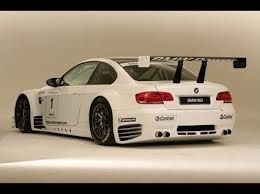A car is a wheeled, self-powered motor vehicle used for transportation. Most definitions of the term specify that cars are designed to run primarily on roads, to have seating for one to eight people, to typically have four wheels, and to be constructed principally for the transport of people rather than goods.[4][5] The year 1886 is regarded as the birth year of the modern car. In that year, German inventor Karl Benz built the Benz Patent-Motorwagen. Cars did not become widely available until the early 20th century. One of the first cars that was accessible to the masses was the 1908 Model T, an American car manufactured by the Ford Motor Company. Cars were rapidly adopted in the United States of America, where they replaced animal-drawn carriages and carts, but took much longer to be accepted in Western Europe and other, less developed, parts of the world.
Cars are equipped with controls used for driving, parking, passenger comfort and safety and controlling a variety of lights. As of the 2010s, controls have been added to vehicles, making them more complex. Examples include rear reversing cameras, air conditioning, navigation systems, and in car entertainment. Most cars in use in the 2010s are propelled by an internal combustion engine, fueled by deflagration of gasoline (also known as petrol) or diesel. Both fuels cause air pollution and are also blamed for contributing to climate change and global warming.[6] Vehicles using alternative fuels such as ethanol flexible-fuel vehicles andnatural gas vehicles are also gaining popularity in some countries. Electric cars, which were invented early in the history of the automobile, began to become commercially available in 2008.
There are costs and benefits to car use. The costs of car usage include the cost of: acquiring the vehicle, interest payments (if the car is financed), repairs and auto maintenance, fuel, depreciation, driving time, parking fees, taxes, and insurance.[7] The costs to society of car use include: maintaining roads, land use, road congestion, air pollution, public health, health care, and disposing of the vehicle at the end of its life. Road traffic accidents are the largest cause of injury-related deaths worldwide.[8]
The benefits may include on-demand transportation, mobility, independence and convenience.[9] The societal benefits may include: economic benefits, such as job and wealth creation from car production, sales and maintenance, transportation provision, society well-being derived from leisure and travel opportunities, and revenue generation from the tax opportunities. The ability for humans to move flexibly from place to place has far-reaching implications for the nature of societies.[10] It was estimated in 2010 that the number of cars had risen to over 1 billion vehicles, up from the 500 million of 1986.[11] The numbers are increasing rapidly, especially in China, India and other NICs.[12]
Etymology
The word "car" is believed to originate from the Latin word carrus or carrum ("wheeled vehicle"), or the Middle English word carre (meaning cart, from Old North French). In turn, these originated from the Gaulish word karros (a Gallic chariot). The Gaulish language was a branch of the Brythoic language which also used the word Karr; the Brythonig language evolved into Welsh (and Gaelic) where 'Car llusg' (a drag cart or sledge) and 'car rhyfel' (war chariot) still survive.[13][14] It originally referred to any wheeled horse-drawn vehicle, such as a cart, carriage, or wagon.[15][16] "Motor car" is attested from 1895, and is the usual formal name for cars in British English.[5] "Autocar" is a variant that is also attested from 1895, but that is now considered archaic. It literally means "self-propelled car".[17] The term "horseless carriage" was used by some to refer to the first cars at that the time that they were being built, and is attested from 1895.[18]
The word "automobile" is a classical compound derived from the Ancient Greek word autós (αὐτός), meaning "self", and the Latin word mobilis, meaning "movable". It entered the English language from French, and was first adopted by the Automobile Club of Great Britain in 1897.[19] Over time, the word "automobile" fell out of favour in Britain, and was replaced by "motor car". It remains a chiefly North American usage.[20] An abbreviated form, "auto", was formerly a common way to refer to cars in English, but is now considered old-fashioned. The word is still used in some compound formations in American English, like "auto industry" and "auto mechanic".[21][22]
History
The first working steam-powered vehicle was designed—and most likely built—by Ferdinand Verbiest, a Flemish member of a Jesuit mission in China around 1672. It was a 65-cm-long scale-model toy for the Chinese Emperor that was unable to carry a driver or a passenger.[9][23][24] It is not known if Verbiest's model was ever built.[24]

Nicolas-Joseph Cugnot is widely credited with building the first full-scale, self-propelled mechanical vehicle or automobile in about 1769; he created a steam-powered tricycle.[25] He also constructed two steam tractors for the French Army, one of which is preserved in theFrench National Conservatory of Arts and Crafts.[26] His inventions were, however, handicapped by problems with water supply and maintaining steam pressure.[26] In 1801, Richard Trevithick built and demonstrated his Puffing Devil road locomotive, believed by many to be the first demonstration of a steam-powered road vehicle. It was unable to maintain sufficient steam pressure for long periods, and was of little practical use.
The development of external combustion engines is detailed as part of the history of the car, but often treated separately from the development of true cars. A variety of steam-powered road vehicles were used during the first part of the 19th century, including steam cars, steam buses, phaetons, and steam rollers. Sentiment against them led to the Locomotive Acts of 1865.
In 1807, Nicéphore Niépce and his brother Claude created what was probably the world's first internal combustion engine (which they called a Pyréolophore), but they chose to install it in a boat on the river Saone in France.[27] Coincidentally, in 1807 the Swiss inventor François Isaac de Rivaz designed his own 'de Rivaz internal combustion engine' and used it to develop the world's first vehicle to be powered by such an engine. The Niépces' Pyréolophore was fuelled by a mixture ofLycopodium powder (dried spores of the Lycopodium plant), finely crushed coal dust and resin that were mixed with oil, whereas de Rivaz used a mixture of hydrogen andoxygen.[27] Neither design was very successful, as was the case with others, such as Samuel Brown, Samuel Morey, and Etienne Lenoir with his hippomobile, who each produced vehicles (usually adapted carriages or carts) powered by internal combustion engines.[3]
In November 1881, French inventor Gustave Trouvé demonstrated a working three-wheeled car powered by electricity at the International Exposition of Electricity, Paris.[28]

Although several other German engineers (including Gottlieb Daimler, Wilhelm Maybach, and Siegfried Marcus) were working on the problem at about the same time, Karl Benz generally is acknowledged as the inventor of the modern car.[3]

In 1879, Benz was granted a patent for his first engine, which had been designed in 1878. Many of his other inventions made the use of the internal combustion engine feasible for powering a vehicle. His firstMotorwagen was built in 1885 in Mannheim, Germany. He was awarded the patent for its invention as of his application on 29 January 1886 (under the auspices of his major company, Benz & Cie., which was founded in 1883). Benz began promotion of the vehicle on 3 July 1886, and about 25 Benz vehicles were sold between 1888 and 1893, when his first four-wheeler was introduced along with a model intended for affordability. They also were powered with four-stroke engines of his own design. Emile Roger of France, already producing Benz engines under license, now added the Benz car to his line of products. Because France was more open to the early cars, initially more were built and sold in France through Roger than Benz sold in Germany. In August 1888 Bertha Benz, the wife of Karl Benz, undertook the first road trip by car, to prove the road-worthiness of her husband's invention.

In 1896, Benz designed and patented the first internal-combustion flat engine, called boxermotor. During the last years of the nineteenth century, Benz was the largest car company in the world with 572 units produced in 1899 and, because of its size, Benz & Cie., became a joint-stock company.
The first motor car in central Europe and one of the first factory-made cars in the world, was produced by Czech company Nesselsdorfer Wagenbau (later renamed to Tatra) in 1897, the Präsident automobil.




